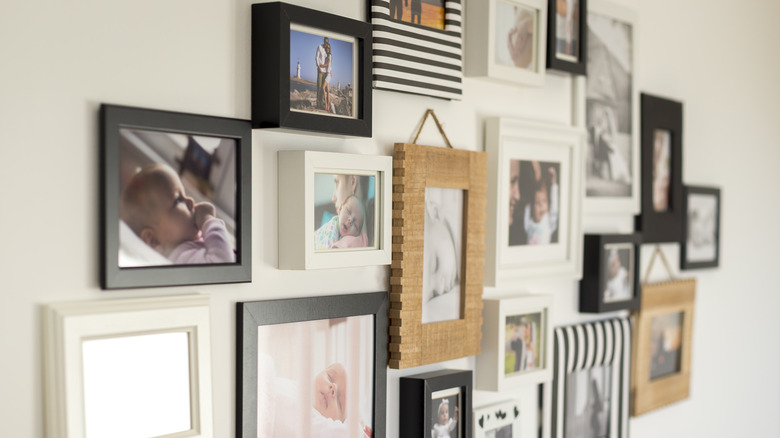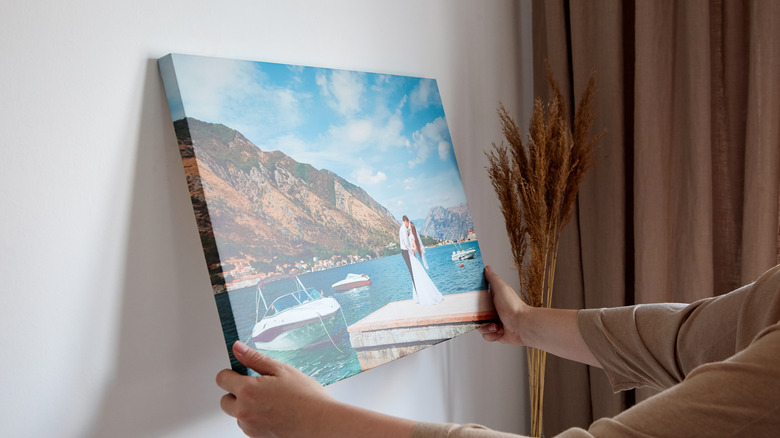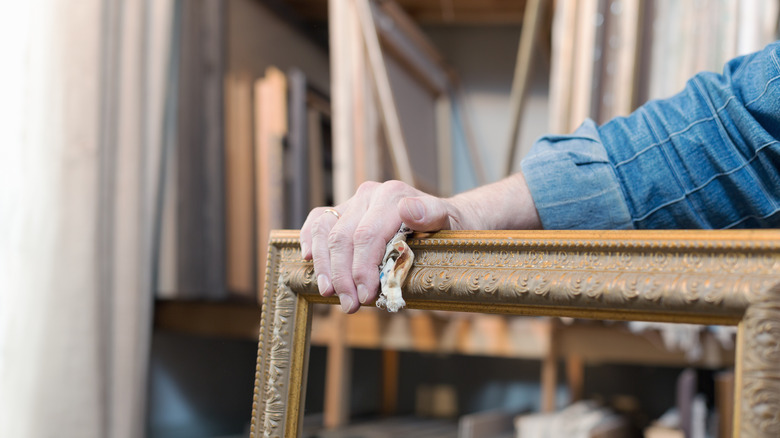The Easiest Way To Clean Your Gallery Wall For A Much Needed Refresh
One of the easiest and most tasteful ways to decorate your house is by adding a touch of personality to your walls. Most people opt for a gallery to showcase their journey through life, photographs taken from travels, or artistic works. As time goes by, your walls may start looking faded or even discolored a bit, which is natural. Dust and other impurities settle on them so much to the point that a regular duster would fail to get all of it off. Oftentimes, the picture frames exacerbate the situation by staining the wall due to the accumulation of dust and its reactions with oxidation and moisture. These stains are difficult to remove with just soap and water. You need something stronger, like vinegar, to fully clean it off the wall and revitalize your space.
Vinegar does a great job of taking off all those hard-to-dust stains around the rims of picture frames because it contains a mild level of acetic acid, typically up to 6%. Acetic acid is a known effective cleaning solution and can remove hard residues, such as those created on walls by dust and moisture. If your walls are white, it only makes the dirtiness of the wall more apparent. You need a vinegar solution, some microfiber towels, a sponge, and a soft-bristled toothbrush, depending on how stubborn the stain is.
Take down the frames on your gallery wall before cleaning
Before you get rid of the dust on your gallery wall, you have to take down all the paintings and picture frames for better access to the wall. You also don't want the cleaning solution to accidentally splash and ruin them for good. Keep the frames a good distance away while you get to work.
The first thing you want to do after taking down the frames is dust the wall. You don't want the vinegar mixing with the loose dust and making an even bigger mess. Use the microfiber cloth or duster to wipe down the wall until the fresh dust is gone. Then, make the cleaning solution by mixing an equal amount of vinegar and water into a spray bottle or container. Spray it on the wall and wipe with the sponge or scrub with the toothbrush if the stain is extra stubborn.
As you work on the wall, make sure you don't saturate it with so much cleaning solution that it drips down. This could lead to watermarks, which you want to avoid. The sponge you use should be damp but not soaked. When you are through washing the wall with vinegar, use a dry microfiber towel to dry it up. You want to avoid streaking as much as possible, and the wall must be moisture-free before you settle the frames back in place.
Wipe down the artwork frames as well to get rid of dust
Once you've washed your wall, the next thing to tackle is cleaning the frames. You have to do this with a dry cloth because water and vinegar can damage the content. Carefully wipe down the frame and glass until they are dust-free before hanging them back on the walls. When you're done, your room should look a lot brighter because the dust and stains aren't there to reflect the light away.
The type of paint on your wall matters a lot, too. The vinegar cleaning solution works great with oil-based paint, especially the silky, glossy ones. However, if you have texture paint, which is rougher to the touch, you may need to add about ½ a teaspoon of borax to the mixture for more abrasion.
While vinegar is a relatively mild cleaning agent, you should still be mindful when using it to clean your walls. Conducting a spot test on an inconspicuous portion of the wall is a great idea to make sure it won't have any adverse effects. When you are cleaning the wall, do so in circular motions and gently so that you don't accidentally strip off the paint. You also want to make sure to use white microfiber cloth throughout. Some low-quality colored cloth can leave its own dye stains on the wall if you're not careful.


